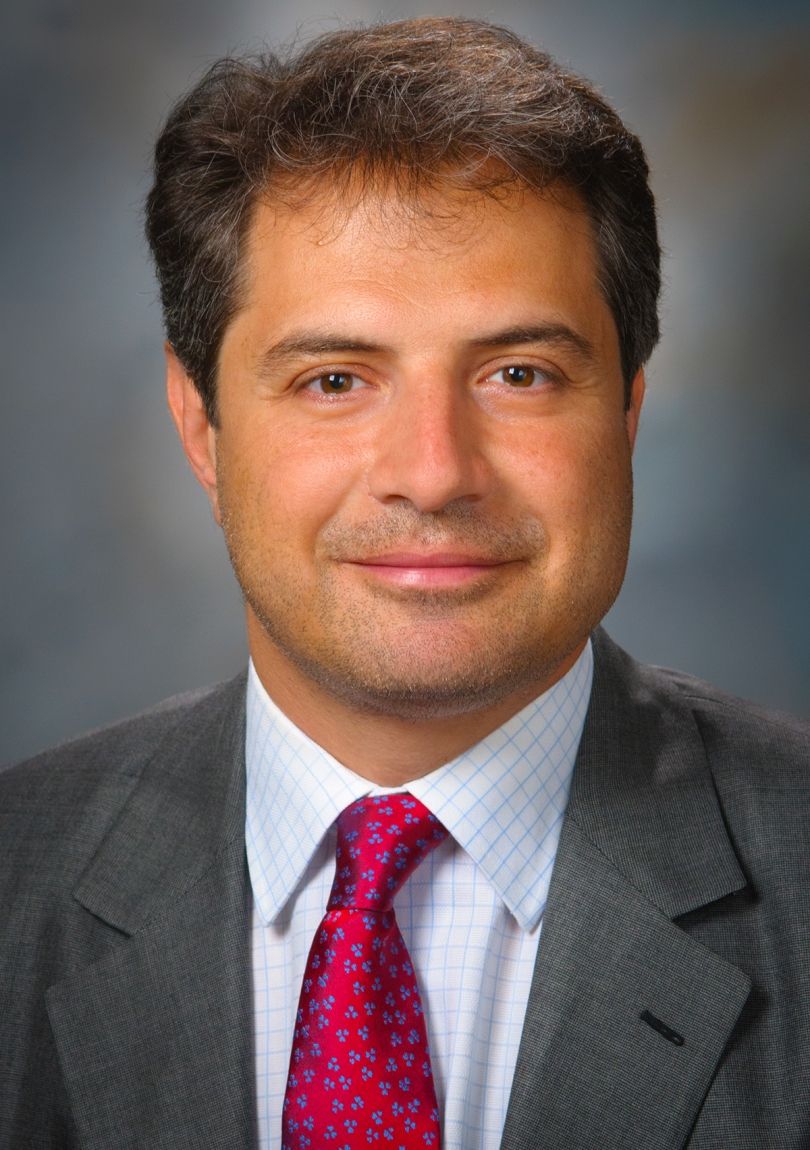Advancements in Frontline AML Treatment Could Lead to Better Patient Outcomes
Over the past 2 years, the amount of FDA-approved frontline treatments for patients with acute myeloid leukemia have increased. These emergent treatments have caused a shift in the standard of care for patients with AML and inspiring analyses of regimens that researchers believe can improve outcomes for AML treatment.
Elias Jabbour, MD

Elias Jabbour, MD
Over the past 2 years, the amount of FDA-approved frontline treatments for patients with acute myeloid leukemia (AML) have increased. These emergent treatments have caused a shift in the standard of care for patients with AML and inspiring analyses of regimens that researchers believe can improve outcomes for AML treatment.
Among the recent approvals for frontline AML treatment are FLT3 inhibitors, IDH1/2 inhibitors, CPX-351 (cytarabine and daunorubicin; Vyxeos) for patients with therapy-related AML, and the combination of venetoclax (Venclexta) and hypomethylating agents (HMAs) for older patients or those who are ineligible for intensive induction chemotherapy. According to Elias Jabbour, MD, researchers are now enhancing regimens to improve outcomes for patients with AML. The aim is to improve overall survival in this patient population.
Despite having more therapies available for targeting AML, challenges with treatment still exist. Safety is one of the critical challenges according to Jabbour, considering some drugs are recommended for lengthy durations that are sometimes unnecessary or too strenuous for patients. “There are still a lot of combinations being evaluated and we should fine-tune the safety concerns,” says Jabbour, professor of medicine, Department of Leukemia, MD Anderson Cancer Center.
Investigators are currently reviewing ways of optimizing the doses and schedules for treatments to reduce the frequency of toxicities without compromising efficacy. But these methods require validation in clinical trials.
In an interview withTargeted Oncology, Jabbour assessed the existing frontline treatments options for AML and the work that still needs to be done to refine treatment and improve upon toxicities for this patient population.
TARGETED ONCOLOGY:Looking at the preferred frontline treatment options for AML, is there still a role for 3+7?
Jabbour:3+7 has been standard of care for patients who are "fit for chemotherapy" with Ara-C (cytarabine) being given at 100 to 200 mg/m2for 7 days, and then the daunorubicin it was agreed that the dose [should be] 60 mg [for 3 days], [or of] idarubicin.
I think that, in young patients, there's good data showing that high-dose Ara-C may be a better induction regimen. The FLAG-IDA [study] from MD Anderson Cancer Center and MRC, for example, have shown that if you give 4 FLAG-IDA (fludarabine, cytarabine, idarubicin, and granulocyte colony-stimulating factor) courses, you can improve survival mainly, in younger patients. I think for somebody young and fit (like 50, 40, and younger), I prefer to choose a high-dose cytarabine-based regimen over 3+7.
In other patients, of course, 3+7 would not be my best choice. We have data about HMAs and venetoclax, as well as other similar regimens.
TARGETED ONCOLOGY:How has this treatment landscape developed in more recent years?
Jabbour:In AML, it has been a great 2 years after a long period [in which] no drugs were approved or available. We [now] have several [new] compounds. Among them, we have the FLT3 inhibitors, midostaurin (Rydapt), and recently gilteritinib (Xospata). We had IDH1 and [IDH2] inhibitors available and approved. Starting in an upfront setting, ivosidenib (Tibsovo) was approved for a frontline indication. CPX-351 was approved for patients with secondary AML [who are] 60 years and older. We had monoclonal antibodies such as re-approved, such as gemtuzumab ozogamicin (Mylotarg)it was on the market, was withdrawn, then came back. It did improve outcomes in patients who [have] core-binding factor or intermediate risk. Then, the breakthrough treatment venetoclax was approved in combination with HMA therapy. [It shows a] high response with HMA therapy alone (67%) and a survival of 17 months. Historically, [the rate was] 7 to 9 months. Finally, glasdegib (Daurismo), which is a [Hedgehog pathway] inhibitor, was approved plus low-dose Ara-C for patients who are unfit for chemotherapy. Of course, this is an approval, but I think we’re working on optimizing this regimen with a better combination to improve outcomes further.
TARGETED ONCOLOGY:What challenges still exist for oncologists regarding treating patients with AML?
Jabbour:We are learning and improving outcomes. I think leukemia is a rare disease, and we all need to work together by referring these patients to academic clinical trial settings. As an academic, I work with my colleagues to deliver the best care to these patients.
TARGETED ONCOLOGY: What should community oncologists know about frontline therapies for acute myeloid leukemia?
Jabbour:In AML, things are changing. For example, the majority of patients are elderly and unfit for chemotherapy. Historically, the survival for these patients was very bad. Today, with HMA and venetoclax, we have a 2-year survival of 40%, which is much better than what we had before. TheFLT3-ITDmutated patients used to have poor outcomes with survival at 15% and transplant indicated. Today, with the FLT3 inhibitors added to a chemotherapy backbone, we have [better] long-term outcomes.
[There are] still a lot of [combinations] being evaluated and we should fine-tune the safety concerns. For example, with venetoclax, the approval is [for the drug] to be given continuously. We know that can cause myelosuppression. [We are learning] not to give the treatment continuously, but to give it for maybe 21 days then maybe hold [the drug] and see when you should resume it.
COMMANDS Trial Demonstrates Benefit Across Mutations in RS-Positive LR-MDS
October 23rd 2024During a Case-Based Roundtable® event, Yazan Madanat, MD, discussed a the patient population and outcomes of the COMMANDS trial of luspatercept in myelodysplastic syndrome in the first article of a 2-part series.
Read More